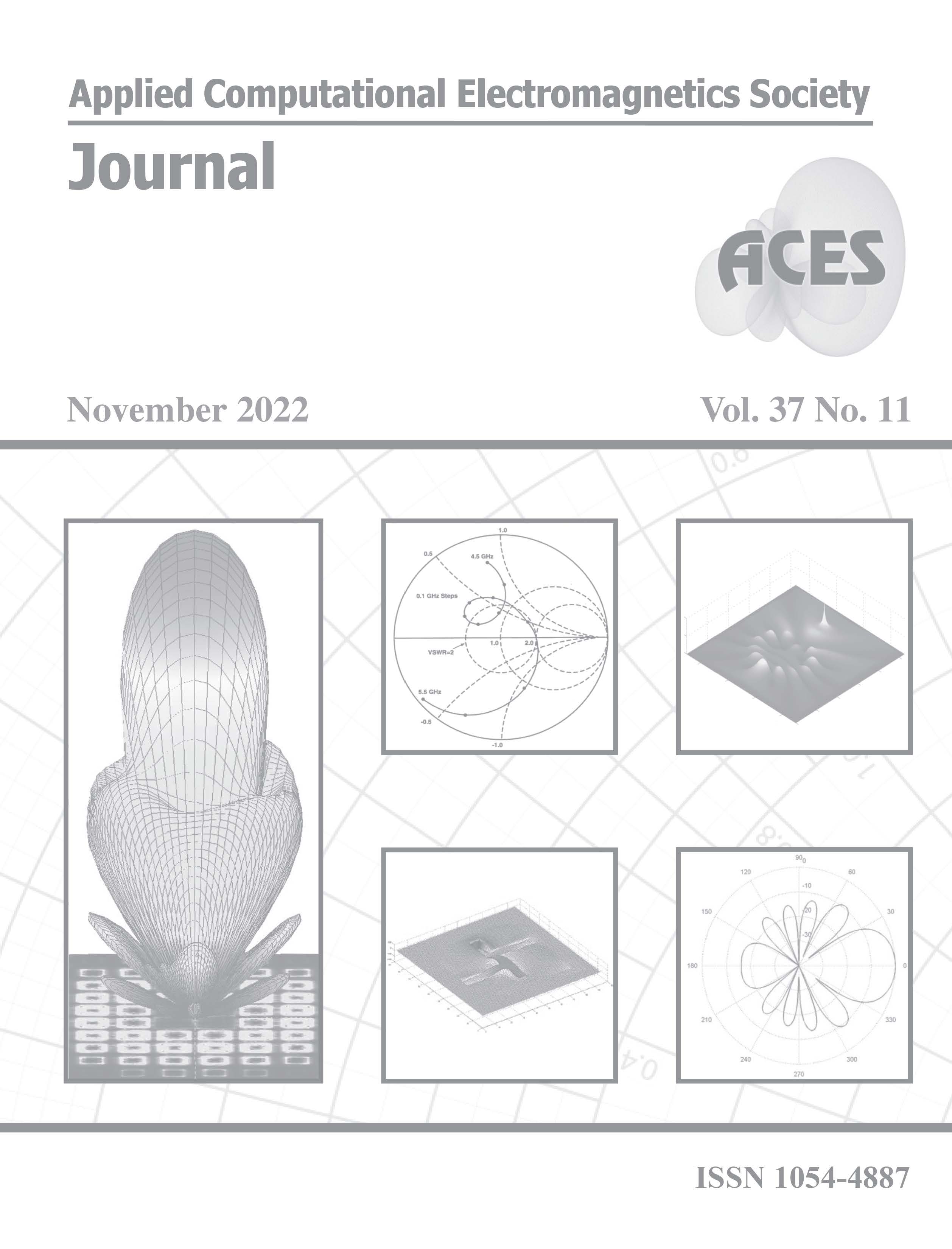Broadband Circularly-polarized Crossed-dipole Antenna with Good Gain Stability
DOI:
https://doi.org/10.13052/2022.ACES.J.371109Keywords:
circularly polarized, cross-dipole, parasitic patches, stable gain, broadbandAbstract
A broadband Circularly Polarized (CP) cross-dipole antenna with the merit of stable gain is proposed. The designed antenna consists of crossed dipoles, parasitic patches, reflectors, and vertical parasitic plates. By adding parasitic patches and parasitic plates, the circular polarization performance of the antenna is significantly improved. Furthermore, the gain value becomes stable in the entire operating frequency band by modifying the structure of the parasitic plates. The final dimension of the presented antenna is 0.76λ0 X 0.76λ0 X 0.28λ0 (λ0 is the wavelength at the center frequency point in the circularly polarized working frequency band). The measured results depict that the Impedance Bandwidth (IBW) is 80.8% (2.03GHz~4.78GHz) and the Axial Ratio Bandwidth(ARBW) is 68.5% (2.35GHz~4.8GHz). Stable gain values, ranging from 6dBic to 7.5dBic, are obtained in the working frequency band, and the average gain can reach 7dBic.
Downloads
References
P. Sharma and K. Gupta, “Analysis and optimized design of single feed circularly polarized microstrip antennas,” IEEE Transactions on Antennas and Propagation, vol. 31, no. 6, pp. 949-955, 1983.
J. W. Baik, K. J. Lee, W. S. Yoon, T. H. Lee, and Y. S. Kim, “Circularly polarised printed crossed dipole antennas with broadband axial ratio,” Electronics Letters, vol. 44, no. 13, pp. 785-786, 2008.
J. W. Baik, T. H. Lee, S. Pyo, S. M. Han, J. Jeong, and Y. S. Kim, “Broadband Circularly Polarized Crossed Dipole With Parasitic Loop Resonators and Its Arrays,” IEEE Trans Antennas Propag, vol. 59, no. 1, pp. 80-88, 2011.
H. H. Tran and I. Park, “Wideband circularly polarized 2×
antenna array with multibeam steerable capability,” IEEE Antennas and Wireless Propagation Letters, vol. 16, pp. 345-348, 2017.
L. Wang, W. X. Fang, Y. F. En, Y. Huang, W. H. Shao, and B. Yao, “Wideband circularly polarized cross-dipole antenna with parasitic elements,” IEEE Access, vol. 7, pp. 35097-35102, 2019.
Z. Zhao, Y. Li, L. Wang, Z. Tang, and Y. Yin, “Design of broadband circularly polarized antenna via loading coupled rotated dipoles,” Microwave and Optical Technology Letters, vol. 61, pp. 425-430, 2018.
W. J. Yang, Y. M. Pan, and S. Y. Zheng, “A low-profile wideband circularly polarized crossed-dipole antenna with wide axial-ratio and gain beamwidths,” IEEE Transactions on Antennas and Propagation, vol. 66, no. 7, pp. 3346-3353, 2018.
H. H. Tran, I. Park, and T. K. Nguyen, “Circularly polarized bandwidth-enhanced crossed dipole antenna with a simple single parasitic element,” IEEE Antennas and Wireless Propagation Letters, vol. 16, pp. 1776-1779, 2017.
H. Zhang, Y. Guo, and G. Wang, “A design of wideband circularly polarized antenna with stable phase center over the whole GNSS bands,” IEEE Antennas and Wireless Propagation Letters, vol. 18, no. 12, pp. 2746-2750, 2019.
Y. Feng, J. Li, B. Cao, J. Liu, G. Yang, and D. Wei, “Cavity-backed broadband circularly polarized cross-dipole antenna,” IEEE Antennas and Wireless Propagation Letters, vol. 18, no. 12, pp. 2681-2685, 2019.
M. Sefid, C. Ghobadi, and J. Nourinia, “Broadband circularly polarized crossed-dipole antenna and its array for long-term evolution communication systems,” International Journal of RF and Microwave Computer-Aided Engineering, vol. 31, no. 12, e22896, 2021.
Y. Chen, S. Wang, S. Shi, M. Jiang, J. Ding, J. Gao, and G. Zhai, “Landstorfer Printed Log-Periodic Dipole Array Antenna With Enhanced Stable High Gain for 5G Communication,” IEEE Transactions on Antennas and Propagation, vol. 69, no. 12, pp. 8407-8414, 2021.
Z. Wu, X. Li, and X. Song, “An improved ultra-wideband circularly polarized cross-dipole antenna,” 13th International Symposium on Antennas, Propagation and EM Theory (ISAPE), pp. 1-3, 2021.




